Best Julia Programming Books to Buy in December 2025
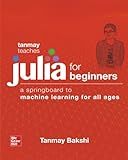
Tanmay Teaches Julia for Beginners: A Springboard to Machine Learning for All Ages


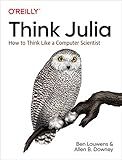
Think Julia: How to Think Like a Computer Scientist



Julia Programming for Operations Research



Algorithms with JULIA: Optimization, Machine Learning, and Differential Equations Using the JULIA Language


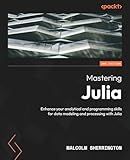
Mastering Julia: Enhance your analytical and programming skills for data modeling and processing with Julia


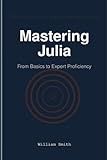
Mastering Julia: From Basics to Expert Proficiency


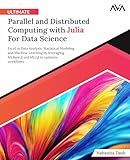
Ultimate Parallel and Distributed Computing with Julia For Data Science: Excel in Data Analysis, Statistical Modeling and Machine Learning by ... Programming — Parallel Systems Path)


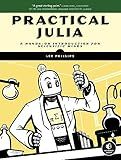
Practical Julia: A Hands-On Introduction for Scientific Minds


In Julia, working with strings involves various operations such as concatenating strings, accessing individual characters, searching for substrings, and modifying strings. Here are some important aspects to consider when working with strings in Julia:
- Concatenating Strings: You can concatenate two strings using the * operator or the string() function. For example:
string1 = "Hello" string2 = "Julia" result = string1 * ", " * string2 # Output: "Hello, Julia"
- Accessing Individual Characters: You can access individual characters of a string using indexing. In Julia, strings are treated as one-based arrays of characters. For example:
str = "Julia" first_char = str[1] # Output: 'J' last_char = str[end] # Output: 'a'
- Searching for Substrings: To search for a specific substring within a string, you can use the occursin() function. It returns a boolean indicating whether the substring is present or not. For example:
str = "Julia is a powerful language" found = occursin("powerful", str) # Output: true not_found = occursin("Python", str) # Output: false
- Modifying Strings: Julia provides various functions for modifying strings. For example:
- To convert a string to uppercase or lowercase, you can use uppercase() or lowercase() respectively.
- To split a string into an array of substrings based on a delimiter, you can use split().
- To replace occurrences of a substring with another string, you can use replace().
- To remove leading and trailing white spaces, you can use strip().
Overall, Julia provides a wide range of string manipulation functions that make it easy to work with strings in various ways.
How to capitalize the first letter of each word in a string in Julia?
In Julia, you can capitalize the first letter of each word in a string using the capitalize function along with join and split functions. Here's an example:
function capitalizeWords(str::AbstractString) words = split(str) capitalized = [capitalize(word) for word in words] return join(capitalized, " ") end
sentence = "the quick brown fox" capitalizedSentence = capitalizeWords(sentence) println(capitalizedSentence)
Output:
The Quick Brown Fox
In the above example, we define a function capitalizeWords that takes a string str as an input. We split the string into individual words using the split function, then capitalize each word using the capitalize function. Finally, we join the capitalized words back into a single string using the join function, with a space as the delimiter.
How to split a string at newline characters in Julia?
To split a string at newline characters in Julia, you can use the split function with the newline character ('\n') as the delimiter. Here is an example:
text = "Hello\nWorld\nI\nam\nJulia" lines = split(text, '\n')
println(lines)
Output:
["Hello", "World", "I", "am", "Julia"]
In this example, the split function is used to split the text string at each newline character ('\n'). The resulting lines are stored in the lines array, and then printed using println().
How to find the index of a certain character in a string in Julia?
In Julia, you can use the findfirst function to find the index of a certain character in a string. Here's an example:
str = "Hello, World!" char_to_find = 'o'
index = findfirst(isequal(char_to_find), str)
println(index) # Output: 5
In the above example, we define a string str and a character char_to_find. We then use findfirst function to find the first occurrence of char_to_find in str and store its index in the variable index. Finally, we print the value of index to the console, which gives us the index of the first occurrence of the character 'o' in the string "Hello, World!".
